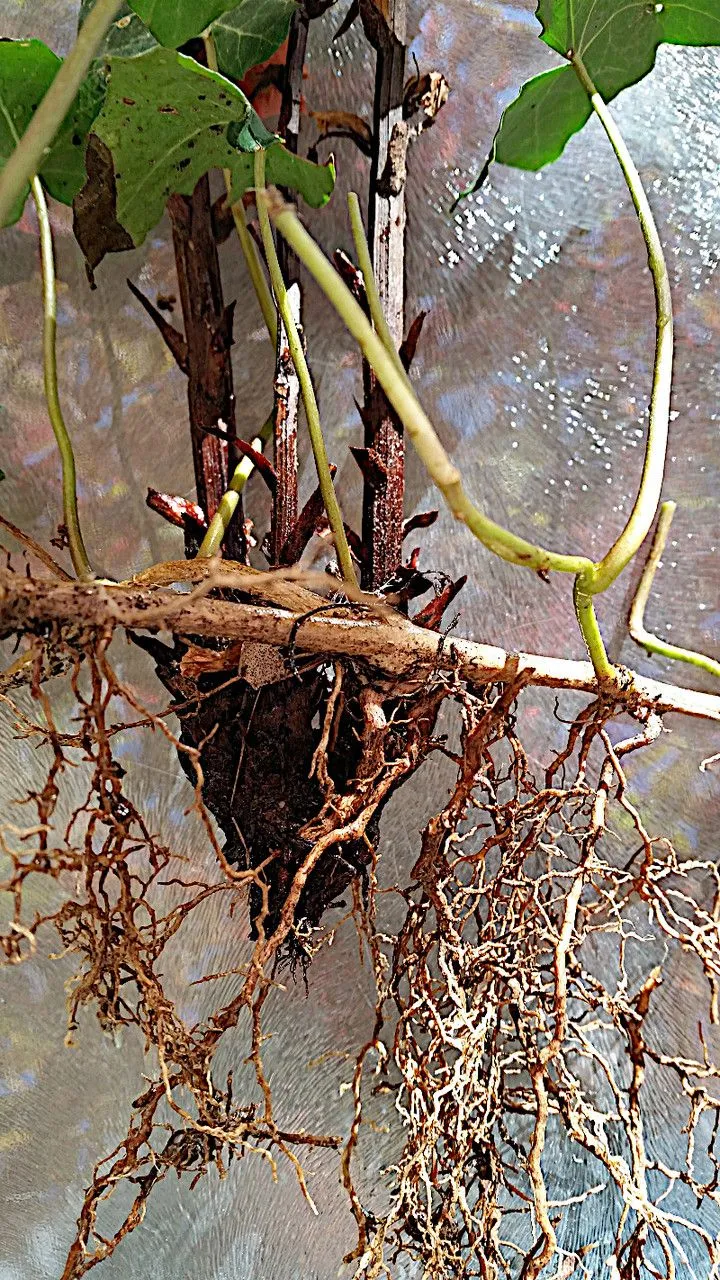
Author: Duby
Bibliography: Bot. Gall., ed. 2, 1: 350 (1828)
Year: 1828
Status: accepted
Rank: species
Genus: Orobanche
Vegetable: False
Observations: Macaronesia, W. Europe to Medit. and N. Iran
The Ivy broomrape, known scientifically as Orobanche hederae, is an intriguing parasitic plant that captivates botanists and plant enthusiasts alike. This species was first detailed by Duby in 1828 in the publication “Bot. Gall., ed. 2, 1: 350”.
Belonging to the family Orobanchaceae, Orobanche hederae demonstrates a fascinating adaptation strategy by parasitizing its host plants rather than relying on photosynthesis. This characteristic is typical of broomrapes, which derive nutrients and water from the roots of their hosts.
Ivy broomrape primarily targets ivy (Hedera species) as its host, hence its name. It attaches itself to the roots of the ivy, siphoning off vital resources to sustain its growth and reproduction. This parasitic relationship can be commonly observed in regions stretching from Macaronesia and Western Europe to the Mediterranean and Northern Iran.
Ecologically, Orobanche hederae plays a significant role in its habitat. While the relationship with its host plants can be detrimental to the latter, the broomrape contributes to the plant diversity and dynamic interactions within its ecosystem.
Ivy broomrape’s distinctive appearance sets it apart from other flora. It does not possess chlorophyll and thus lacks the green foliage typical of many plants. Instead, it emerges with a unique, often pale or yellowish stem adorned with small, tubular flowers. These flowers can vary in color but are frequently white or purple, contributing to the plant’s uncommon beauty.
Given its specialized nature and reliance on host plants, the Ivy broomrape stands as a testament to the incredible diversity and complexity of plant evolution. Its presence in diverse regions from Macaronesia to Northern Iran highlights its adaptability and the intricate web of life that sustains such parasitic species within their ecosystems.
In summary, Orobanche hederae, or Ivy broomrape, is not just a botanical curiosity but a significant species within its ecological niche. Its parasitic lifestyle, specific host interactions, and widespread habitat make it a valuable subject of study, enriching our understanding of plant relationships and ecological balance.
Deu: efeu-sommerwurz, efeusommerwurz
Eng: ivy broomrape
Dan: vedbend-gyvelkvæler
Nld: klimopbremraap
Swe: murgrönssnyltrot
Fra: orobanche du lierre
Ces: záraza bře
Cym: caldrist ar eiddew, gorfanc eiddew, gorfanc ar eiddew, gorfanhadlen eiddew
En: Ivy broomrape
Cs: Záraza bře
Da: Vedbend-gyvelkvæler
Nl: Klimopbremraap
Eo: Hedera orobanko
Fi: Muratinnäive
Fr: Orobanche du lierre
De: Efeu-Sommerwurz, Efeusommerwurz
Hu: Borostyán-vajvirág
It: Succiamele dell’Edera
Pl: Zaraza bluszczowa
Sv: Murgrönssnyltrot
Cy: Gorfanhadlen eiddew, Caldrist ar Eiddew, Gorfanc Eiddew, Gorfanc ar Eiddew
Taken May 9, 2022 by Thomas Goumarre (cc-by-sa)
Taken May 16, 2022 by François Terroir (cc-by-sa)
Taken Jun 26, 2022 by Naat Heering (cc-by-sa)
Taken Oct 1, 2020 by Michel lagahe (cc-by-sa)
Taken Jan 20, 2021 by Plechackova Martina (cc-by-sa)
Taken Jul 24, 2020 by piva patrizia (cc-by-sa)
Taken Mar 11, 2021 by david david (cc-by-sa)
Taken Apr 21, 2022 by Mustapha ABDOUNE (cc-by-sa)
Taken May 9, 2022 by Thomas Goumarre (cc-by-sa)
Taken Apr 26, 2022 by mireille garcia (cc-by-sa)
Taken Sep 21, 2016 by Jean marie Duquenoy (cc-by-sa)
Taken Sep 21, 2016 by Jean marie Duquenoy (cc-by-sa)
Taken Jul 11, 2022 by Fabrice Rubio (cc-by-sa)
Taken Apr 4, 2022 by William Coville (cc-by-sa)
Taken May 22, 2021 by Giuliano De Santis (cc-by-sa)
Taken Jun 27, 2021 by Brigitte Seydoux (cc-by-sa)
Taken Jun 11, 2021 by jul salle (cc-by-sa)
Taken Oct 16, 2021 by VolpeBoschiva (cc-by-sa)
Taken Apr 4, 2021 by Asd Syr (cc-by-sa)
Taken May 16, 2021 by Delphine ONILLON (cc-by-sa)
Taken Jan 1, 1900 by EOL − Encyclopedia of Life (cc-by-nc-sa)
Taken May 25, 2019 by Pak Alatak (cc-by-sa)
Taken Sep 21, 2016 by Jean marie Duquenoy (cc-by-sa)
© copyright of the Board of Trustees of the Royal Botanic Gardens, Kew.
© copyright of the Board of Trustees of the Royal Botanic Gardens, Kew.
© copyright of the Board of Trustees of the Royal Botanic Gardens, Kew.
Growth habit: Forb/herb
Ph maximum: 7.0
Ph minimum: 6.5
Light: 5
Atmospheric humidity: 7
Bloom months: [‘may’, ‘jun’, ‘jul’]
Soil nutriments: 6
Family: Myrtaceae Author: (F.Muell.) K.D.Hill & L.A.S.Johnson Bibliography: Telopea 6: 402 (1995) Year: 1995 Status:…
Family: Rubiaceae Author: Pierre ex A.Froehner Bibliography: Notizbl. Bot. Gart. Berlin-Dahlem 1: 237 (1897) Year:…
Family: Sapindaceae Author: Koidz. Bibliography: J. Coll. Sci. Imp. Univ. Tokyo 32(1): 38 (1911) Year:…
Family: Asteraceae Author: A.Gray Bibliography: Pacif. Railr. Rep.: 107 (1857) Year: 1857 Status: accepted Rank:…
Family: Fabaceae Author: Medik. Bibliography: Vorles. Churpfälz. Phys.-Ökon. Ges. 2: 398 (1787) Year: 1787 Status:…
Family: Aspleniaceae Author: (Cav.) Alston Bibliography: Bull. Misc. Inform. Kew 1932: 309 (1932) Year: 1932…